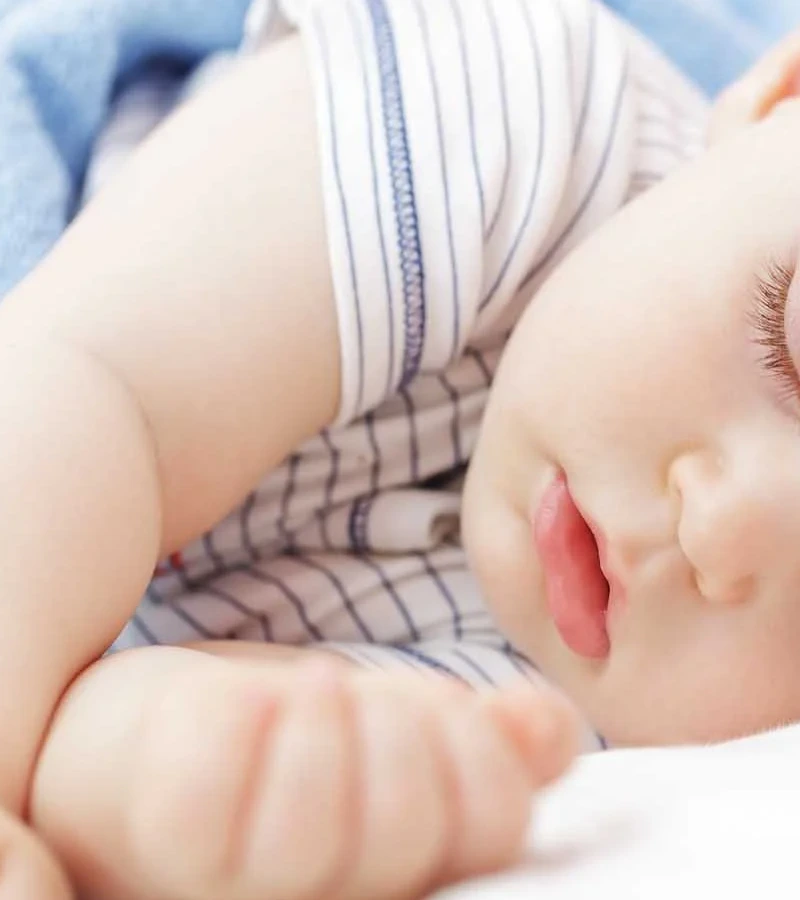How to dress baby for sleep can feel tricky—too many layers, too few, hats or no hats? With years of experience as a baby sleepwear manufacturer and trusted parent advice, we’re here to guide you in creating the safest, coziest nights for your little one.
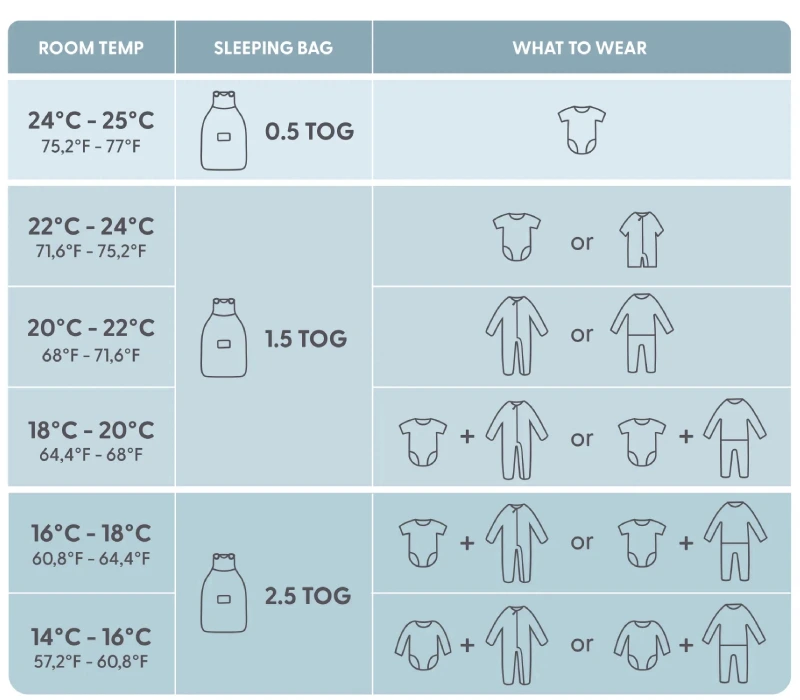
What is the Best Temperature for Baby Sleep?
Creating a cozy, secure sleep environment starts with getting the room temperature just right. According to the American Academy of Pediatrics (AAP), the ideal temperature for baby sleep is between 68°F and 72°F (20°C to 22°C). This range reduces the risk of overheating, a contributing factor to Sudden Infant Death Syndrome (SIDS). If you’re unsure, a simple room thermometer can be your best friend.
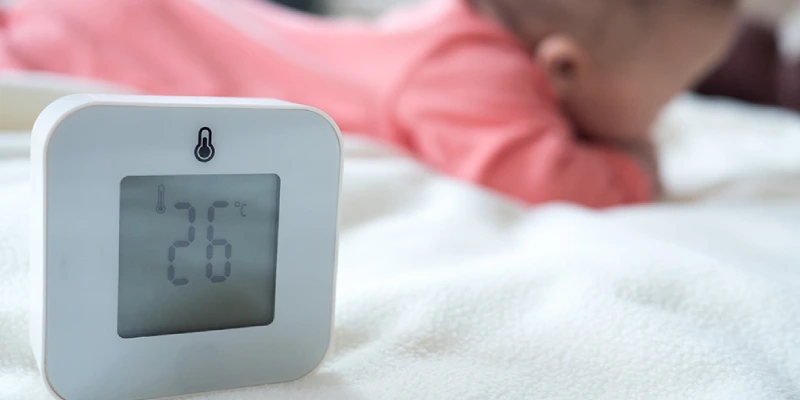
Many experienced parents and pediatric sleep consultants recommend using a fan or a smart thermostat to maintain this optimal range throughout the night. It’s not about making the room cold—rather, it’s about keeping it comfortably cool. Babies aren’t great at regulating their body temperature, so a room that feels ‘just right’ for you in light pajamas is likely perfect for them too.
Friendtex can find additional guidance in health standards such as the NHS Sleep Safety Guidelines and Wikipedia’s entry on Infant Sleep Safety, both of which affirm the importance of regulating a baby’s sleep temperature.
Ultimately, if you feel comfortable in a light T-shirt while sleeping, Friendtex baby is likely comfortable too—just add one layer more for them.
What Should My Baby Wear to Sleep?
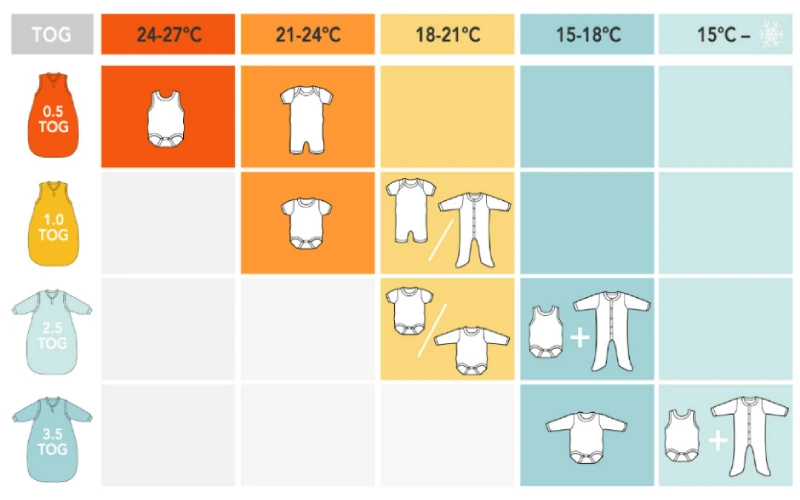
This is the question we hear the most as a baby sleepwear manufacturer. And honestly, it’s a good one—because the right sleepwear can mean the difference between a fussy night and peaceful dreams.
At our company, we’ve developed baby sleepwear based on years of collaboration with pediatricians, infant sleep specialists, and thousands of moms like you. Our bodysuits, footed pajamas, and wearable blankets are not just adorable—they’re designed with functionality and safety in mind.
So, what should your baby wear?
- A breathable cotton bodysuit as a base layer.
- Add a sleep sack (TOG-rated for the season).
- In colder weather, footed pajamas in organic cotton pajamas or bamboo pajamas.
Avoid fleece or polyester blends unless you’re in a very cold climate and monitoring the temperature closely.
Many of our customers say things like:
“Your sleepwear is the only one that doesn’t irritate my baby’s skin—thank you!” – Jenna, mom of twins.
“We used to worry about overheating. Now with your TOG-rated sacks, we sleep better too.” – Li Mei, first-time mom
There’s no one-size-fits-all answer, but with breathable fabrics and smart layering, your baby will be both safe and snug.
Baby Pajamas Materials and Styles
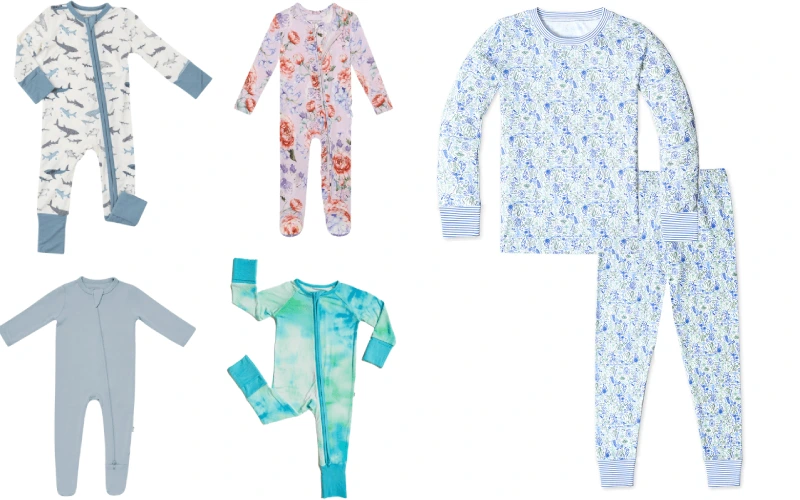
Choosing the right material for baby pajamas is essential to ensure comfort, breathability, and safety. Soft, natural fabrics like cotton and bamboo are ideal for delicate baby skin, offering moisture-wicking and hypoallergenic properties. For colder weather, fleece pajamas provide warmth and coziness.
Baby pajamas come in various styles designed for convenience and safety. Footed onesies keep babies warm from head to toe, while two-piece sets offer flexibility. Zip-up sleepers and snap-button pajamas make diaper changes easier, especially during nighttime.
Below is a quick overview of popular materials and styles to help you pick the best pajamas for your baby:
| Material | Features | Best For | Style Examples |
|---|---|---|---|
| Cotton | Soft, breathable, moisture-wicking | Year-round use | Footed onesies, two-piece sets |
| Organic Cotton | Chemical-free, hypoallergenic | Sensitive skin | Zip-up sleepers, swaddle pajamas |
| Bamboo | Soft, eco-friendly, antibacterial | Warm and humid climates | Two-piece sets, lightweight sleepers |
| Fleece | Thick, warm, insulating | Cold weather | Footed sleepers, hooded pajamas |
Baby & Child Pajama Size Guide Table
| Age Group | Clothing Size | Height (cm/in) | Weight (kg/lb) | Common Pajama Styles |
|---|---|---|---|---|
| Newborn (0–3 mo) | NB / 0–3M | 50–58 cm / 19–23 in | 3–5.5 kg / 6–12 lb | Kimono-style bodysuits, footed sleepers |
| Infant (3–6 mo) | 3–6M | 58–66 cm / 23–26 in | 5.5–7.5 kg / 12–17 lb | Zip-up onesies, long-sleeve footed pajamas |
| Infant (6–9 mo) | 6–9M | 66–71 cm / 26–28 in | 7.5–9 kg / 17–20 lb | Rompers, short or long-sleeve pajamas |
| Infant (9–12 mo) | 9–12M | 71–76 cm / 28–30 in | 9–10.5 kg / 20–23 lb | Two-piece sets, fleece sleepers |
| Toddler (12–18 mo) | 12–18M | 76–84 cm / 30–33 in | 10.5–12 kg / 23–26 lb | Snug-fit 2-piece cotton pajamas |
| Toddler (18–24 mo) | 18–24M | 84–89 cm / 33–35 in | 12–13.5 kg / 26–30 lb | Footless cotton pajamas, wearable blankets |
| 2T (2 years) | 2T | 89–94 cm / 35–37 in | 13.5–15 kg / 30–33 lb | 2-piece sets with elastic waistbands |
| 3T (3 years) | 3T | 94–99 cm / 37–39 in | 15–16 kg / 33–35 lb | Loose-fit cotton sets, seasonal themes |
| 4T (4 years) | 4T | 99–104 cm / 39–41 in | 16–18 kg / 35–40 lb | Lightweight summer sets, flannel winter sets |
| Kids (5–6 yrs) | 5–6 | 104–116 cm / 41–45 in | 18–21 kg / 40–46 lb | Classic PJs, long johns, nightgowns |
What Are Signs Your Baby Is Too Hot While Sleeping?
Knowing the signs of overheating is absolutely crucial. An overheated baby is not only uncomfortable but also at higher risk for SIDS, according to the AAP and WHO infant care guidelines.
Here’s what to watch for:
- Sweaty neck or back
- Flushed cheeks
- Damp hair
- Rapid breathing
- Heat rash on chest or neck
You can check your baby’s temperature by touching the back of their neck or chest. If it feels hot and sweaty, remove a layer.
Moms we’ve spoken to share that they were surprised to learn that babies can get hot even when their hands and feet feel cool. That’s why it’s essential to check their core temperature zones.
We include temperature education cards with every set of our baby pajamas—it’s one more way we help parents feel confident and informed.
What Are the Signs Your Baby Is Cold at Night?
Too cold is just as disruptive as too warm. A baby that’s chilly may wake frequently, have trouble settling, or exhibit the following:
- Pale or mottled skin
- Cool belly or chest
- Whimpering or fussy behavior
Interestingly, cold extremities (hands and feet) are not always a reliable sign. Instead, gently place your hand on the chest or back. If it feels cool, consider adding a layer.
Midwives often suggest using a wearable blanket or long-sleeve footed pajamas in cooler temperatures. That’s one of the reasons our bamboo-blend fabrics are a parent favorite—they keep warmth in without the weight.
Experienced moms often keep a few TOG-rated sleep sacks on hand to adjust layering quickly and safely.
How Many Layers Should a Newborn Wear?
A general rule of thumb? One more layer than you’d wear to bed. But every baby is different, and factors like prematurity, birth weight, and local climate come into play.
Most newborns sleep comfortably in:
- A diaper
- A cotton bodysuit
- A footed sleeper or wearable blanket
Our certified sleep consultants emphasize this: it’s not about bulk, it’s about balance. Too many layers can trap heat, while too few might leave your baby unsettled.
We’ve worked with NICU nurses to design our newborn sleep sets. These come with temperature guidance based on real infant care research.
So when you dress your baby, think in breathable layers that can easily be added or removed—and check their chest for warmth.
Should Newborns Wear Hats to Sleep?
The answer, backed by AAP and CDC guidelines, is a strong no. While hats are great right after birth for keeping heat in, once your baby is home, hats during sleep are a risk.
They can:
- Slip down and block breathing
- Cause overheating
- Disrupt your baby’s ability to self-regulate temperature
A better option? Maintain a warm room and dress your baby appropriately in head-to-toe sleepwear like our footed bamboo pajamas.
Our customer Sophie shared:
“I thought hats were necessary at night. Now I know better—and your zip-up footies keep her warm without the worry.”
Remember, a cool head and warm chest is actually ideal for safe infant sleep.
Are Baby Monitor Temperatures Accurate?
Baby monitors with built-in thermometers are helpful—but not foolproof. Several studies, including one published in The Journal of Pediatric Nursing, reveal that temperature readings can vary by several degrees, especially if the device is placed near a window, heater, or in direct light.
Tips for accurate monitoring:
- Place your monitor away from direct air flow or sun
- Use a standalone room thermometer for double-checking
- Always go by how your baby feels, not just what a screen says
Our brand’s certified sleepwear comes with temperature guidance and an optional Bluetooth thermometer that syncs with a mobile app.
Knowing your gear’s limitations and using common sense is what will give you peace of mind.
How to Create the Ideal Sleep Environment for Your Baby
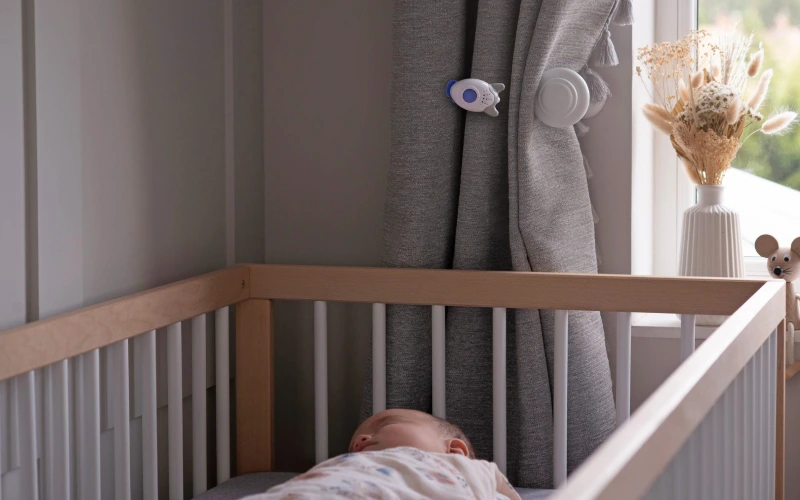
It’s more than just pajamas and temperature—it’s the whole sleep setup that makes a difference. Parents who use a holistic sleep approach often find their babies sleep longer and cry less.
Here’s what that looks like:
- Room temperature between 68–72°F
- Dim lighting or blackout curtains
- White noise or gentle lullabies
- Breathable crib mattress with a fitted sheet
- Baby dressed in TOG-appropriate sleepwear
We always advise removing all loose bedding, toys, and bumper pads. Minimalism in the crib = maximum safety.
FAQ
How to dress baby for sleep in winter?
Dress your baby in warm, breathable layers like a cotton onesie and a sleep sack or wearable blanket. Avoid heavy blankets to prevent overheating. Keep the room cozy around 68-72°F (20-22°C) for safe, comfortable sleep.
How to dress baby for sleep in summer?
Choose lightweight, breathable fabrics like cotton short-sleeve onesies or lightweight pajamas. Avoid heavy blankets and opt for a light muslin swaddle if needed. Keep the room cool, ideally between 72-78°F (22-26°C), to prevent overheating and ensure comfort.
How to dress baby for sleep with swaddle?
Use a soft, breathable swaddle made of cotton or muslin. Dress your baby in a lightweight onesie underneath. Ensure the swaddle is snug but allows hip movement, and never cover the baby’s face to keep sleep safe and cozy.
How to dress baby for sleep in air conditioning?
Dress your baby in a long-sleeve cotton onesie or light pajamas to protect from cooler air. Use a lightweight wearable blanket or sleep sack for extra warmth without overheating. Keep the room temperature between 68-72°F (20-22°C).
How to dress baby for sleep at 72 degrees?
At 72°F (22°C), dress your baby in a light cotton onesie or pajamas. Add a thin sleep sack if needed for comfort. Avoid loose blankets and layers to prevent overheating while keeping your baby cozy and safe for sleep.
Conclusion
Getting your baby dressed properly for sleep isn’t just about clothing—it’s about understanding their needs and the environment around them. By maintaining the ideal room temperature, choosing breathable, safe sleepwear, and watching for signs of overheating or chills, you’re setting the foundation for healthy sleep habits.
Our professional baby sleepwear designs are crafted to support these principles, offering comfort and peace of mind backed by expert research and real parent feedback. Remember, your baby’s sleep quality improves when they’re safe, warm, and comfortable. Trust your instincts, adjust layers thoughtfully, and use trusted tools like thermometers to create a nurturing sleep space every night.


